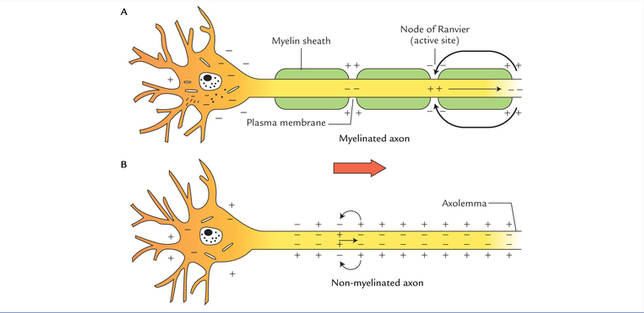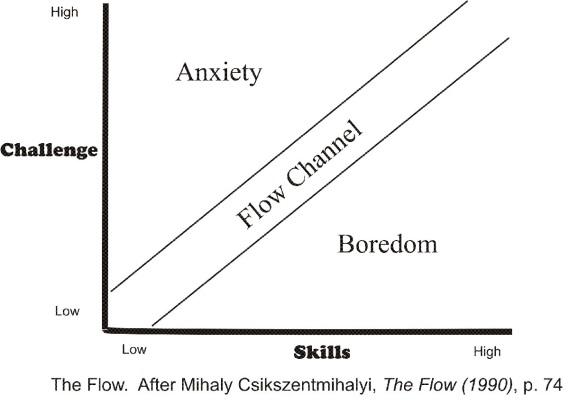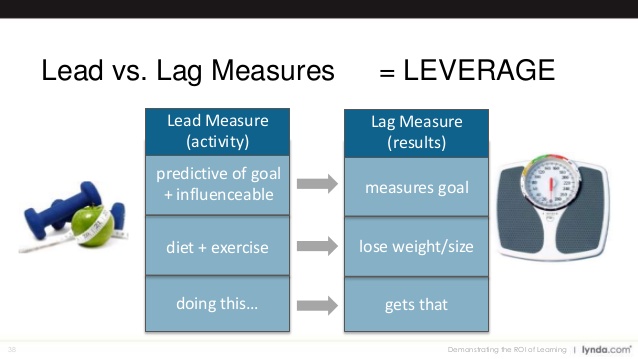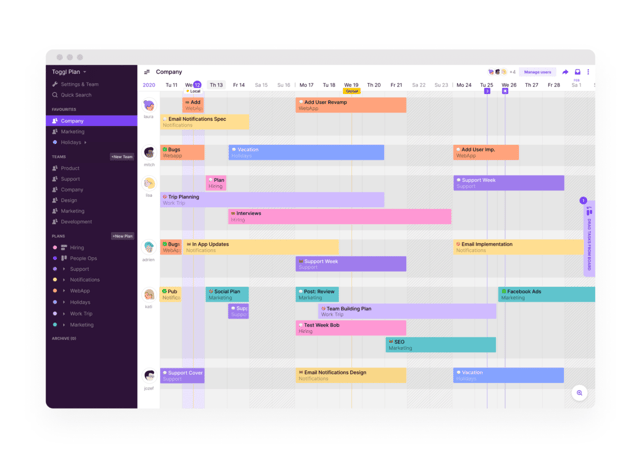An Opening Promise (and a commitment from you)
This guide to deep work can help you make lasting improvements to your life. It will only work if you make a commitment to reading it. All of the research on user behavior on the internet tells us that you’ll enter this page, scan it briefly, then go browse to something else.
Don’t do that.
This is a skill that transformed my career and mental health. I’ve gone from feeling unreliable and constantly anxious to confident in my ability to do what I say I will do.
The history of the get rich quick scheme
Everybody’s Magazine was an American magazine published from 1899 to 1929. A 1904 article exposed Thaddeus Wright as a scam artist who would make ridiculous promises about investment opportunities and then run away with the money. In the article, the phenomenon is named the “get rich quick scheme” an early example of a now-infamous term.
While it’s easy to spot these over the top scams over 100 years later, the underlying psychological issue is still with us. It’s easy to fall for promises of instant gratification.

Deep work is not an instantly gratifying practice, especially at the beginning.
There will be periods of frustration and boredom. If you’re anything like me it’s alarming when you’re starting a productivity journey to find out that working for 15 minutes without checking smartphone, email, or social media seems impossible.
Still with me? Good. With that in mind, we can think about what would it look like if you were consistently hitting your goals and learning to create value. It’s not a get rich quick scheme, but over time this will always lead to financial security, meaning, and fun.
I like to think about it like going to the gym. It’s obvious that we need to break a sweat to make progress. We can take that same model into the realm of productivity, focus, and getting things done. Extending that metaphor, deep work is the highest leverage “workout” I’ve found for improving these skills.
Part 1: How Deep Work Can Shift Everything (the deep work hypothesis)
1. What is deep work?
Deep work is a skill explored in the 2016 book Deep Work by Cal Newport. Newport is a computer science researcher who is known for his prolific output. To help explain why he’s been so successful producing influential research he’s developed three big ideas in Deep Work.
- The Deep Work Hypothesis
- Digital Minimalism
- Attention Capital Theory
2. Why is deep work such a high leverage skill?
In Cal’s words:
The ability to perform deep work is becoming increasingly rare at exactly the same time it is becoming increasingly valuable in our economy. As a consequence, the few who cultivate this skill, and then make it the core of their working life, will thrive.
Cal draws on both scientific literature in neuroscience and stories from individual case studies to show why deep work is effective at improving the quality of work.
Additionally, he investigates the trends that are making this skill more challenging. For example, the constantly connected modern office environment, our difficulties to focus without checking smartphones, and behavior trends on social media.
Because deep work improves the quality of your work while also cultivating soft skills that are steadily declining it’s an extremely high leverage practice.
The neuroscientific foundation for deep work:
“This new science of performance argues that you get better at a skill as you develop more myelin around the relevant neurons, allowing the corresponding circuit to fire more effortlessly and effectively. To be great at something is to be well myelinated.”
To underscore the previous point there is a strong foundation of scientific literature that suggests deliberate practice is the best way to get better at a skill. By focusing intensely on what you’re doing, the brain circuit relevant to that skill fires again and again.
Over time, a substance called myelin forms around these circuits making it easier and more natural to perform the skill.

Deep work and the science of attention:
“When you switch from some Task A to another Task B, your attention doesn’t immediately follow — a residue of your attention remains stuck thinking about the original task.”
Another stark benefit of deep work has to do with the science of attention. Rapid task switching from working on a project to checking email, to sending a text, and back to the project is ineffective because you can’t bring the full power of your mind to bear on the project.
3. The concrete value of practicing deep work
Why is deep work valuable for your career?
Simply, deep work gives you the ability to master hard things faster. Also, it increases your ability to produce great work at a rapid pace. Let’s explore why this so rare and valuable.
Deep work is rare and rare is valuable
There are two main reasons why deep work is rare:
A. Shallow work doesn’t make you sweat
Newport introduces the principle of least resistance in Deep Work:
In a business setting, without clear feedback on the impact of various behaviors to the bottom line, we will tend towards behaviors that are easiest in the moment.
This behavior is pervasive and one of the best things you can do early in your career is to avoid it at all costs. A simple antidote is to learn what activities create the most value in your job or life and prioritize them.
B. Busyness as a proxy for productivity
“In the absence of clear indicators of what it means to be productive and valuable in their jobs, many knowledge workers turn back toward an industrial indicator of productivity: doing lots of stuff in a visible manner.”
Reason B often emerges because of reason A. In lieu of doing valuable things regularly it becomes important to look valuable. While this seems ridiculous laid out like this it’s a recognizable phenomenon to anyone who has spent time working in an office.
What both of these reasons bring to light is one of the most important principles you can learn in your career. There are only two things that matter in your career. First, your ability to create value. Second your ability to communicate how you’re creating that value. Deep work will help you work on the types of projects that actually create value while also giving you something compelling to communicate.
4. How deep work provides meaning on multiple levels
While Deep Work is geared to making big improvements in your career it also has profound implications for finding more meaning in life. This is important because 9 out of 10 people are willing to take less money for more meaningful work.
What’s great about Newport’s hypothesis is he detaches meaning from a particular job we have to get or a discovery about passion we have to make. Instead, he links meaning to the process of working deeply itself.
He provides three supporting arguments here:
Neurological argument: Deep work is associated with more meaning
First, he links the utilization of our most advanced neural machinery with more meaning. This is a simple and compelling argument. It makes sense that using our brains to their fullest potential would generate meaning because if we’re not doing that there may be a feeling that we’re not utilizing our highest potential.
In work (and especially knowledge work), to increase the time you spend in a state of depth is to leverage the complex machinery of the human brain in a way that for several different neurological reasons maximizes the meaning and satisfaction you’ll associate with your working life.
Psychological argument: Deep work leads to flow
The psychology of flow (a fancy way of describing when we’re in the zone) tries to describe how we become fully immersed, energized, and find enjoyment in an activity. For Newport, training deep work is key to that process.
Jobs are actually easier to enjoy than free time, because like flow activities they have built-in goals, feedback rules, and challenges, all of which encourage one to become involved in one’s work, to concentrate and lose oneself in it.

Philosophical argument: Deep work as a craft
Cal argues that finding craftsmanship in your work builds meaning and develops pride. He references a craftsman that makes swords and the meaning he gets out of meticulous work.
This observation might be obvious but requires emphasis: There’s nothing intrinsic about the manual trades when it comes to generating this particular source of meaning. Any pursuit — be it physical or cognitive — that supports high levels of skill can also generate a sense of sacredness.
Part 2: Putting Deep Work into Practice
When beginning a deep work practice, I suggest the following strategies as guidelines:
Three strategies for working deeply:
- Ritualize
- Make grand gestures
- Execute like a business
1. Strategies for Deep Work
Strategy #1 – Ritualize
There are some key components that will occur in any deep work practice.
- Where you’ll work and for how long.
- How you’ll work once you start to work – Perhaps a ban on the internet?
- How you’ll support your work – Maybe you need a good cup of coffee to start or light exercise?
- Note your common distractions GET RID OF THEM
While the idea of a “ritual” may seem esoteric or religious it’s actually describing a series of actions performed according to a prescribed order. With that in mind, the first strategy is to concretize where you’ll work, how you will work, how you’ll and how you will support this work into a series of actions that you can master.
For me, it’s important to do deep work as soon as I wake up. My ritual includes making coffee, lighting some incense, reviewing my list of the most important things to do for the upcoming day, opening my computer, and getting started.
Because slack, social media, email, and my phone are my biggest distractions these are kept off until the first session is completed. I like to check these during my break periods.
Strategy #2 – Make grand gestures
Newport recounts the story of J.K. Rowling. As she was trying to write the final Harry Potter book she found herself distracted and unable to focus. So, she purchased an expensive hotel room and committed to using that space to write. The act of spending a lot of money made the cost of procrastination much higher for her. Newport provides an example of how he spent $50 on a notebook hoping the cost would encourage him to practice important mathematical work he had to accomplish.
Personally, I use this strategy a lot when I have a big project. I will take two busses to my favorite library and settle down to work there. Because it takes over an hour to return once I’m settled in I always find myself working between 3-6 hours.
Strategy #3 – Execute like a business
When it comes to your work it’s a good idea to decouple what you accomplish from your self-worth. This has pragmatic and mental health benefits. While it will definitely help you become more effective it will also help with being more honest about things that aren’t working well.
The best way to do this is to analyze your work as if you were a business analyzing a product. We can break this strategy down into 3 sub-points.
Act on the lead measures
This is a great tactic I first heard about in Franklin Covey’s The 7 Habits of Highly Effective People.
Lag measures describe things like profit, revenue, or customer satisfaction. They are called lag measures because by the time you see them the actions that created them have passed. It’s already too late to shift gears.
Conversely, lead measures are designed to capture the performance activities that predict the lag measures. As an example, a sales team may know that time spent prospecting for new leads predicts increased revenue. They might look for ways proactively improve lead prospecting as a way to increase revenue.
This is a great idea to adopt for our personal output as well. As an example, if you want to earn your next career opportunity the lag measures may include job interviews and offers. Lead measures may include deep work spent working on your Praxis application, building a Crash profile, or researching companies.

Keep a compelling scoreboard
In Deep Work Newport talks about tracking the amount of deep work he does and seeing how it tracks over time. There are many tools you can use for this including simple google sheets or excel spreadsheets. Personally, I use a great tool called toggl for time tracking. It gives me a visual representation of how I’m progressing with my deep work practice.

Create a cadence of accountability
It’s important to have processes in place to celebrate good periods of work and understand what happened when things don’t work out as well. I’ve adopted my own version of the agile method of project management to help with this. Every Sunday, I give myself 60 minutes to review the previous week and plan out the next 7 days.
This 3rd strategy is greatly enhanced by analyzing the data from part 2 of this article which we will transition to now.
2. Suggested tools and mental models
Okay, so you’re sold on deep work 1500 words in and ready to start building your practice. In this section, we’ll explore some tools and mental models to help enhance your practice and address the common obstacles.
A. Toggl
A major friction point when getting starting is decision fatigue. It’s easy to get derailed by having to make a lot of little decisions about what you’re working on, when you have to stop, what your daily commitments are, etc
If you’re looking for a way to limit distractions by giving yourself a visual reminder of what it is you should be doing, toggl is a great solution.
It’s a visual tool that lays out your schedule right in front of you so that you can understand your routine at a quick glance limiting decision fatigue and the inertia to getting started with deep work.

B. Pomodoro Technique
The Pomodoro Technique is a time management method developed by Francesco Cirillo. The technique uses a timer to break down work into intervals, traditionally 25 minutes in length, separated by short breaks. Personally, I work in 30-90 minute chunks depending on energy level and morale.
Marc Pfeiffer has a useful breakdown of using this technique plus toggl to get massive amounts of work done.
C. Grit
Angela Duckworth created the science of Grit. It’s one of my favorite books. She defines it as passion plus perseverance. In short, when you get fired up about something you’re willing to show up every day for however long it takes to make your goals a reality.
She uses an interesting equation to encapsulate the essence of grit.
Talent x Effort = Skill
Skill x Effort = Achievement
What I like about this is that effort counts twice.
Yes, Talent is important (she defines it as how quickly you can pick up a new skill) but effort is twice as important. If you’re one of the few with the grit to face your distractions and make it 1800 words into an article you’re already demonstrating effort. This will be crucial to keep in mind as you’re cultivating the consistency needed to sustain deep work.
D. Non-Zero Days
One of the core themes in the Praxis curriculum is the idea of non-zero days. What we suggest is do one small thing daily to move closer to your goal. Coupling non-zero days with deep work will add jet fuel to your productivity. Additionally, they make deep work more sustainable and rewarding because you’re breaking down big tasks into discrete chunks.
Part 3: What to work on?
We’ve explored why it’s a good idea to implement deep work. We then investigated some tools and strategies for making it work. You may be asking, “well what should I spend my time working on?” Let’s address that with a few different options.
1. Whatever you’re doing right now
One of the best things you can do early in your career is to find ways to do great work in the following types of jobs:
- maintenance
- fast food
- retail
- dine-in restaurants
- daycare
T.K. Coleman has done great work on this blog showing how ambitious young people make the mistake of discounting these kinds of jobs. They say things like “Well, it’s just a fast-food job. It’s not like I work at a bank or something.” This returns us back to the idea of craftsmanship and pride when it comes to the work we do. One of the best things we can do to master deep work is fall in love with the process of working itself and forget so much about what the particular role or title is.
2. Anything that you don’t hate
While it’s important to have pride in what we do, it’s impossible to fall in love with the process of doing something if you absolutely hate it. If you find yourself doing something you hate. Stop it and find something you hate doing less.
Explore the activities, relationships, and obligations you have in life that are draining you. Get rid of them now.
When new opportunities emerge bring all your cognitive faculties to bear on them and do your best. If you do this on repeat possibilities will emerge that you never imagined.
This isn’t just a tactic it’s an entire philosophy you can read about in a collection of essays featuring Mitchell Earl and Isaac Morehouse.
3. Earning your next career opportunity
Finally, the last thing I’d like to explore is using deep work as the core tactic to unlock your next career opportunity.
A. Deep work and the job application
The typical job hunt process is broken and a waste of time. Spending hours mindlessly browsing job boards and submitting cookie-cutter resumes along with hundreds of other applicants is not a smart use of your energy.
The goal for your next job hunt is to have an application that looks different than every other application. Instead of spending 5 hours blasting out a 100 shallow resumes, use that time to find an opportunity you love, research the company, and create a custom pitch.
Crash has an awesome guide to building your resume 2.0. Use deep work to build a memorable pitch that will stand out to hiring managers.
B. Working out loud as a new normal
Another thing you can do to unlock your next career opportunity is to document the work you’re already doing. As an example, as a part of this blog, I’m documenting my own deep work process. This demonstrates authenticity and makes me accountable to my personal network as someone who does what they say they do.
There’s a great book the topic called Show Your Work by Austin Kleon. It works because cultivating new relationships are at the heart of working out loud. When you show your work online you begin to attract people interested in similar things. This leads to new opportunities and knowledge that other people will graciously share. As relationships deepen in your network, they’re more likely to help you or collaborate in some way, creating new possibilities that weren’t imagined before.
These are just 4 ideas for things to get your deep work practice started on. Whether you pick one of them or choose your own direction it’s time to transition to the last stage of our journey together.
Take action.
If you made it to the end of this article, congratulations. It is a challenge to manage our attention and focus long enough to navigate through a long-form article with a lot of information. Don’t waste this immense effort that you just put forth. Spend 5 more minutes concretizing this information and making a plan. What will you accomplish with deep work? Do you have a concrete and measurable plan to go forward?
When you do, email me and I’ll send you a free book. If you put the same effort into encountering the information in it that you did with this article I guarantee 1 year from now you will be in the top 1% of young professionals.
March 26, 2020
